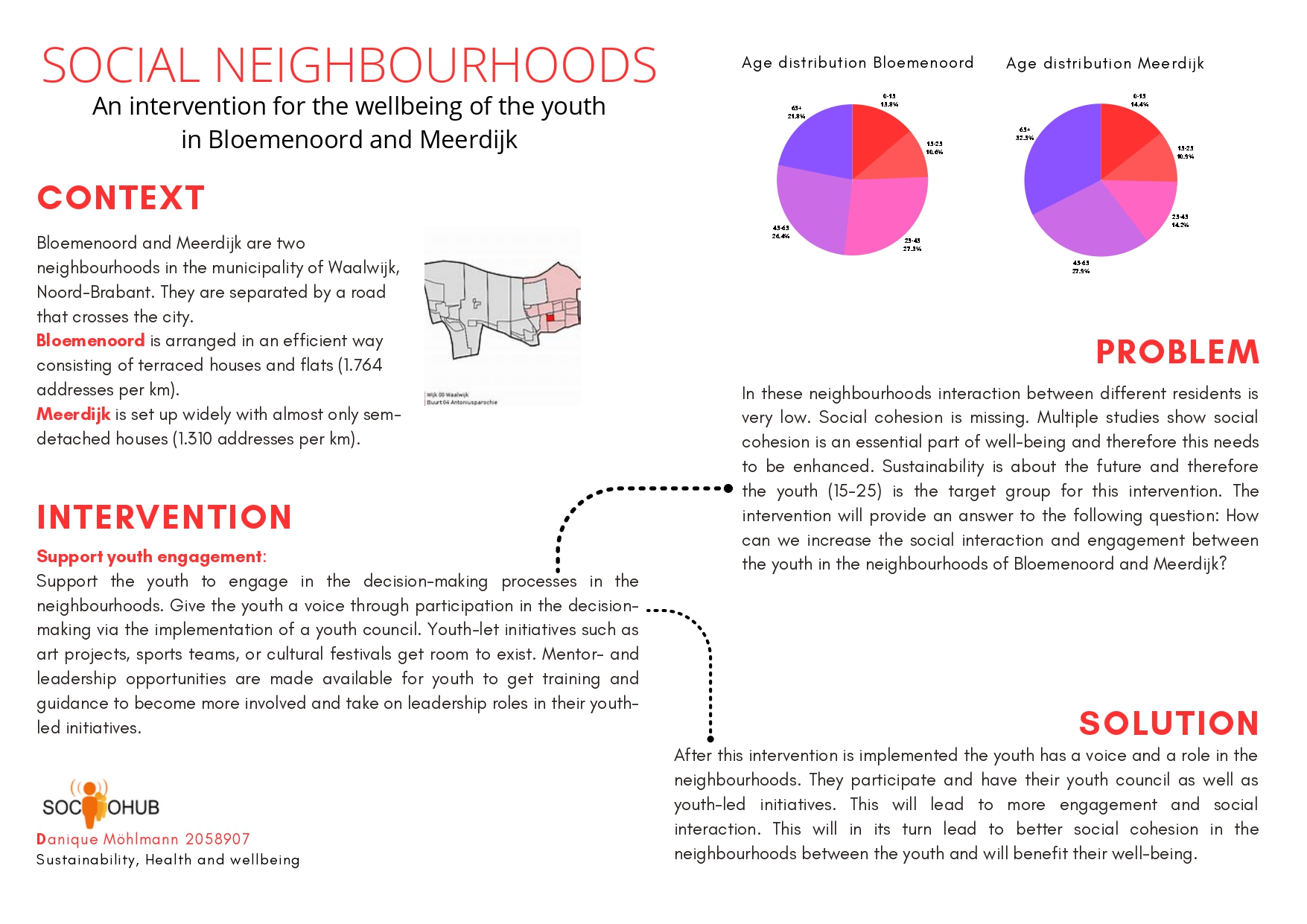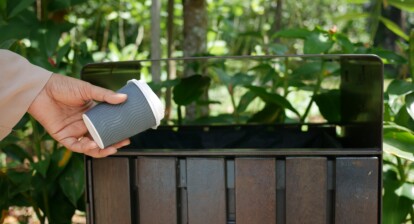Imagine you are a 19-year-old adolescent walking through your neighbourhood. You realise you almost don’t know anybody in the neighbourhood except for maybe the neighbours. Interaction with other residents is little and engagement in the neighbourhood is missing at all. How does this affect your well-being when living in this neighbourhood?
This example is a common phenomenon in today’s neighbourhoods. There is little to no interaction and engagement with residents from the neighbourhood. Especially the youth is at a distance when it comes to social issues and decision-making. Therefore a policy intervention is needed to get the youth to interact more and be more engaged within the community. How will we achieve this? The policy intervention is focused on the age group of youth from 15 to 25 years old. This is an important group because they function as the future of the neighbourhoods. If we want to achieve long-term sustainability we must focus on the group which makes it easier to realise this. The youth is often not integrated and because they are the future, they need the most attention.
“Social cohesion arises when there is more engagement in a community.”
Social cohesion is an important aspect when looking at the well-being of communities. Social cohesion arises when there is more engagement in a community [1]. Other recent studies show that interaction and engagement of youth with each other and within the community contribute to the feeling of social cohesion. For instance, a study done by Christens and Dolan (2011). In which they explained that youth organising initiatives weave together youth and community development. They also state that social change will be more effective at influencing both individuals and communities [2].
Context
First, let me introduce you to the neighbourhoods of Bloemenoord and Meerdijk. These are two neighbourhoods in the municipality of Waalwijk in Noord-Brabant, the Netherlands. The neighbourhoods border each other and are separated by a main road that crosses the city. In Bloemenoord the population is more diverse in comparison to the residents of Meerdijk. There are more people from different ethnic backgrounds as well as non-native inhabitants. Meerdijk, in contrast exists mostly of native Dutch residents. In the figures on the right, you can see the diffusion of the ethnic backgrounds within these neighbourhoods [3]. Next to the residents, let me illustrate the geographical design as well. Bloemenoord has an efficient setup. There are a lot of rows of houses, whereas in Meerdijk the houses have way more space and are bigger. In Bloemenoord there are sports fields and there is a small shopping area with stores, like a supermarket and bakery. These facilities are missing in Meerdijk. In Meerdijk there is a lot of green and room, but there are no facilities like there are in Bloemenoord.
The intervention
The intervention will consist of a few activities which contribute to answering the following question: “How can we increase the social interaction and engagement between the youth in the neighbourhoods of Bloemenoord and Meerdijk?” First of all, it is important to consult with the youth of Bloemenoord and Meerdijk. If we want to get their input, we must know their needs and interests. Talking with them can clarify the insights more, in this way their input can be used. Surveys or support groups are examples of how the consultation could take place. The second activity is enabling youth to engage in youth-led initiatives. Examples are art projects, sports teams, community gardens or parties. The third activity is to provide mentorship and leadership opportunities. This can help build the confidence and skills of youth while also contributing to the community. To realise this all, a youth council will be founded consisting of members that represent the youth of the neighbourhoods. They carry the responsibility of, for example, the youth-led initiatives, and also serve as communication for the municipality of Waalwijk.
In Bloemenoord exists a community centre. This can serve as a meeting point for the youth in Bloemenoord and Meerdijk. It is accessible to everyone and it is beneficial that it is already there. In this way, no extra money has to be spent on creating a meeting point for the youth of the neighbourhood. All the activities are being financed by the municipality of Waalwijk. Every city gets a sum of money from the Dutch government to spend on activities for young adults. This intervention can be realised with the help of that money.
In conclusion, the lack of interaction among youth and disengagement from the community in Bloemenoord and Meerdijk is an issue that needs to be tackled. More engagement and interaction will result in a stronger feeling of social cohesion, which will contribute to the well-being of the youth in Bloemenoord and Meerdijk. If this intervention is implemented we look forward to a bright sustainable living environment in Bloemenoord and Meerdijk, where the well-being of the residents is a priority. And because of that, we should talk more.
And so again imagine yourself as a 19-year-old adolescent walking through your neighbourhood. Only now you do know your neighbours and you are an active member of your neighbourhood. You feel heard and you are a part of this neighbourhood.
Infographic of the policy intervention

References
[1] Barnett, R. V., & Brennan, M. J. (2006). Integrating Youth into Community Development: Implications for Policy Planning and Program Evaluation. Journal of Youth Development, 1(2), 5–19. https://doi.org/10.5195/jyd.2006.382
[2] Christens, B. D., & Dolan, T. (2011). Interweaving Youth Development, Community Development, and Social Change Through Youth Organizing. Youth & Society, 43(2), 528–548. https://doi.org/10.1177/0044118×10383647
[3] AlleCijfers.nl







